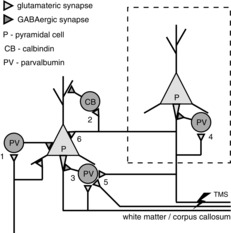Figure 10. Scheme of cortical connections affected by TMS.

Stimulation of the axons of the corpus callosum (lightning symbol) results not only in antidrome activation of the pyramidal cells of origin, but also in orthodrome activation of collateral synapses at both inhibitory interneurons (CB- and PV-type neurons, numbers 2–5) and other pyramidal cells (number 6). All these connections are involved in intra- and inter-areal cortical processing. Recurrent perisomatic inhibition can be either local (numbers 3 and 4) or via a long loop involving pyramidal cells of other cortical layers or areas (indicated by the dashed rectangle, connection number 5). It is assumed that different populations of PV-type interneurons exist, one receiving primarily cortical input and being affected by TMS, and another population primarily receiving thalamic input (number 1) and supposed not to be (or less) affected by TMS (see Staiger et al. 2009 for different populations of PV-type interneurons).
